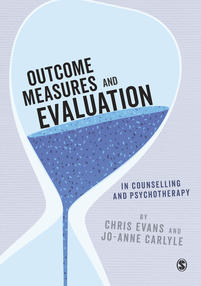Why deprecated and removed?
For some languages linguistic variation across countries is so high as to change responses and general psychometric properties so much that more than one translation seems necessary. Having said that, there has been rather little exploration of this issue.
The history
Back in 2011/12 I worked with Alejandro Lemos in Argentina and Ana Mayo in the UK back to create a Spanish translation of the CORE-OM for Argentina. However at that point I had not really thought out how we can explore empically whether language variation (in any language) is such that we need a different translation. The translation was available on this web site for a while and may be in use in Argentina but our review of peer-reviewed publication references to CORE instruments up to 2021 (Paz, C., Unda-López, A., Valdiviezo-Oña, J., Fernando Chávez, J., Elias Herrera Criollo, J., Toscano-Molina, L., & Evans, C. (2025). Mapping the growth of the CORE system tools in psychotherapy research from 1998 to 2021: Learning from historical evidence. Psychotherapy Research, 1–12. https://doi.org/10.1080/10503307.2025.2457389, open access) showed no publications using it and over the years since 2012 I have had more people from the region tell me that a new version is not needed for Argentina than have said one is necessary hence I have deprecated and removed the translation.
More on the issues
As of 2017 I have been working with people in Latin America, led by Professor Clara Paz in Ecuador to review the complex question of which countries’ Spanish really is so different from Iberian/Castellano/Castilian Spanish that an adaptation is necessary. Our paper Evans, C., Paz, C., & Mascialino, G. (2021). “Infeliz” or “Triste”: A Paradigm for Mixed Methods Exploration of Outcome Measures Adaptation Across Language Variants. Frontiers in Psychology, 12, 695893. https://doi.org/10.3389/fpsyg.2021.695893 (open access) showed that for the CORE-OM in Ecuador, and we think in many other Latin American countries, only one item (item 28: “I have felt unhappy”) is much affected by language variation and the effects of this, though measurable, seemed insufficient to justify the creation of a new Spanish translationWe are now working to create rational, empirical ways to explore that question. We found a very different story for the YP-CORE where empirical work showed clearly that a different translation was needed (Valdiviezo-Oña, J., Ortiz-Mancheno, N., Valdivieso-Arias, G., Erazo-Pérez, D., Rodríguez-Lorenzana, A., Evans, C., & Paz, C. (2024). Assessing the suitability and psychometric properties of the Spanish version of the YP-CORE for adolescents in Latin America: A study in Ecuador. BMC Psychology, 12(1), 671. https://doi.org/10.1186/s40359-024-02169-8, open access). That work was based in Ecuador but involved collaboration with people from various Latin American countries.
The CORE-10 in Argentina
A paper, just out shows that the Spanish translation of the CORE-10 (i.e. of the CORE-10 from the CORE-OM!) has very satisfactory psychometric properties: Propiedades psicométricas del Clinical Outcomes in Routine Evaluation (CORE-10) en Argentina. (2025). Revista Argentina De Ciencias Del Comportamiento, 17(1), 61-71. https://doi.org/10.32348/1852.4206.v17.n1.37272 (DOI not active yet, direct link: https://revistas.unc.edu.ar/index.php/racc/article/view/37272, paper available in Spanish and in English: Psychometric properties of Clinical Outcomes in Routine Evaluation (CORE-10) in Argentina).
Meanwhile, contact me (CE) if you want more information.
Created 31/3/15, last updated 1/5/25; author CE; header image: Argentina, 2019 waiting for total solar eclipse, CE; licence for page and image: Attribution 4.0 International (CC BY 4.0) .


